Volume 1, Issue 1
Displaying 1-12 of 12 articles from this issue
- |<
- <
- 1
- >
- >|
Editrial
-
2004 Volume 1 Issue 1 Pages 1-3
Published: 2004
Released on J-STAGE: April 27, 2004
Download PDF (219K) -
2004 Volume 1 Issue 1 Pages 5-6
Published: 2004
Released on J-STAGE: April 27, 2004
Download PDF (199K)
Review
-
2004 Volume 1 Issue 1 Pages 7-15
Published: 2004
Released on J-STAGE: April 27, 2004
Download PDF (656K) -
2004 Volume 1 Issue 1 Pages 17-29
Published: 2004
Released on J-STAGE: April 27, 2004
Download PDF (639K) -
2004 Volume 1 Issue 1 Pages 31-40
Published: 2004
Released on J-STAGE: April 27, 2004
Download PDF (608K) -
2004 Volume 1 Issue 1 Pages 41-52
Published: 2004
Released on J-STAGE: April 27, 2004
Download PDF (821K) -
2004 Volume 1 Issue 1 Pages 53-61
Published: 2004
Released on J-STAGE: April 27, 2004
Download PDF (510K) -
2004 Volume 1 Issue 1 Pages 63-76
Published: 2004
Released on J-STAGE: April 27, 2004
Download PDF (1144K) -
2004 Volume 1 Issue 1 Pages 77-84
Published: 2004
Released on J-STAGE: April 27, 2004
Download PDF (520K) -
2004 Volume 1 Issue 1 Pages 85-93
Published: 2004
Released on J-STAGE: April 27, 2004
Download PDF (675K)
Original Article
-
2004 Volume 1 Issue 1 Pages 95-101
Published: 2004
Released on J-STAGE: April 27, 2004
Download PDF (510K)
Current Views
-
2004 Volume 1 Issue 1 Pages 103-111
Published: 2004
Released on J-STAGE: April 27, 2004
Download PDF (588K)
- |<
- <
- 1
- >
- >|
